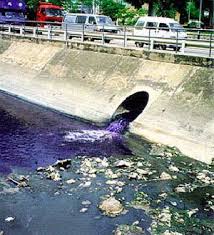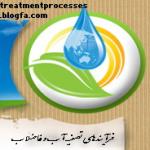Nitrate Reduction Test (تست احیای نیترات)
Nitrate Reduction Test |
|
Nitrate broth is used to determine the ability of an organism to reduce nitrate (NO3) to nitrite (NO2) using the enzyme nitrate reductase. It also tests the ability of organisms to perform nitrification on nitrate and nitrite to produce molecular nitrogen. Nitrate broth contains nutrients and potassium nitrate as a source of nitrate. After incubating the nitrate broth, add a dropperful of sulfanilic acid and α-naphthylamine. If the organism has reduced nitrate to nitrite, the nitrites in the medium will form nitrous acid. When sulfanilic acid is added, it will react with the nitrous acid to produce diazotized sulfanilic acid. This reacts with the α-naphthylamine to form a red-colored compound. Therefore, if the medium turns red after the addition of the nitrate reagents, it is considered a positive result for nitrate reduction. If the medium does not turn red after the addition of the reagents, it can mean that the organism was unable to reduce the nitrate, or it could mean that the organism was able to denitrify the nitrate or nitrite to produce ammonia or molecular nitrogen. Therefore, another step is needed in the test. If the medium does not turn red after the addition of the nitrate reagents, add a small amount of powdered zinc. Be careful, as powdered zinc is hazardous! If the tube turns red after the addition of the zinc, it means that unreduced nitrate was present. Therefore, a red color on the second step is a negative result. The addition of the zinc reduced the nitrate to nitrite, and the nitrite in the medium formed nitrous acid, which reacted with sulfanilic acid. The diazotized sulfanilic acid that was thereby produced reacted with the α-naphthylamine to create the red complex. |
تاریخچه آب و فاضلاب در استان تهران
برخلاف اغلب شهرهای بزرگ دنیا, تهران در کنار رودخانه بنا نشده است؛ به همین دلیل بخشی از آب مورد نیاز این شهر با ید از نقاط دور دست و رودخانه های اطراف تامین و منتقل گردد. تا سال ۱۳۰۶، آب شهر توسط ۲۶ رشته قنات با مجموع آبدهی حدود ۷۰۰ لیتر در ثانیه تامین می گردید. در این سال عملیات احداث کانال انتقال آب رودخانه کرج به تهران آغاز شد. این کانال که ۵۳ کیلومتر طول داشت و آب را از روستای بیلقان کرج به جمشید آباد تهران منتقل می نمود طی چهار سال احداث گردید ؛ و با توجه به اینکه بیست کیلومتر از این کانال سرپوشیده و بقیه رو باز بود لذا احتمال آلودگی و تلف آب وجود داشت. از طریق این کانال مقدار ۵۳ سنگ به عنوان حق آبه و مقداری هم به عنوان سهمیه(نه هشتاد و چهارم) به آب تهران افزوده شد و به این ترتیب جمعاً قریب به یک صد سنگ (حدود ۱۶۰۰ لیتر در ثانیه) آب توسط جویها در شهر توزیع و به آب انبارهای منازل انتقال می یافت.
در سال ۱۳۲۹ طرح اولیه لوله کشی تهران برای جمعیتی معادل نهصدهزار نفر به مرحله اجرا درآمد و دو خط لوله فولادی به قطر ۴۰ اینچ و با ظرفیت ۲۴۲۰۰۰ متر مکعب در شبانه روز برای انتقال آب از آبگیر بیلقان به اولین تصفیه خانه تهران (جلالیه) در نظر گرفته شد. بهره برداری از خط اول خطوط لوله فولادی و تصفیه خانه جلالیه در سال ۱۳۳۴ آغاز گردید.
همچنین در سال ۱۳۳۳ به منظور مهار بارشهای آسمانی، مطالعات ساخت سد امیر کبیر در ۴۰ کیلومتری شمال غربی تهران (از آبگیر خرسنگ کوه)، در حوالی کیلومتر ۲۳ جاده کرج به چالوس نزدیک به روستای واریان آغاز گردید. ساختن این سد در سال ۱۳۳۷ شروع و در اوایل سال ۱۳۴۲ پایان یافت و بهره برداری از آن آغاز شد.
وقتى اقيانوس ها بيمار مى شوند

SIM Medium
SIM Medium
SIM medium is a combination differential medium that tests three different parameters, which are represented by the three letters in the name:
|
Sulfur Reduction Indole Production Motility |
The sulfur reduction test is useful in differentiating enteric organisms. The indole test is a component of the IMViC series of tests, which is used for differentiating the Enterobacteriaceae. The motility test is useful for testing a wide variety of organisms. As a whole, the SIM test is primarily useful for differentiating Salmonella and Shigella.
SIM medium contains nutrients, iron, and sodium thiosulfate. One of the nutrients is peptone, which contains amino acids, including tryptophan.
If an organism can reduce sulfur to hydrogen sulfide, the hydrogen sulfide will combine with the iron to form ferric sulfide, which is a black precipitate. If there is any blackening of the medium, it indicates the reduction of sulfur and is a positive result.
Citrate Test (تست سیترات)
Citrate Test
Simmons citrate agar tests the ability of organisms to utilize citrate as a carbon source. Simmons citrate agar contains sodium citrate as the sole source of carbon, ammonium dihydrogen phosphate as the sole source of nitrogen, other nutrients, and the pH indicator bromthymol blue. This test is part of the IMViC tests and is helpful in differentiating the Enterobacteriaceae .
Organisms which can utilize citrate as their sole carbon source use the enzyme citrase or citrate-permease to transport the citrate into the cell. These organisms also convert the ammonium dihydrogen phosphate to ammonia and ammonium hydroxide, which creates an alkaline environment in the medium. At pH 7.5 or above, bromthymol blue turns royal blue. At a neutral pH, bromthymol blue is green, as evidenced by the uninoculated media.
راهکار های عمومی کاهش آلودگی آب
آيا ميدانيد روزانه 2500 نفر در اثر ابتلا به بيماري هاي ناشي از مصرف آب آلوده جان خود را از دست ميدهند...
آيا صدماتي كه در اثر مصرف آبهاي آلوده شده به فاضلاب ها و ساير آلودگي ها به انسان وارد ميشود جبران پذير است؟
آيا ميدانيد منابع آلوده كننده آب كدامند؟
1-فاضلاب هاي شهري و خانگي كه باعث ورود انواع پاك كننده ها ، پودرهاي رختشويي ، مايع ظرفشويي ، مواد نفتي و روغن هاي سوخته به آب ميشود.
2-فاضلاب هاي صنعتي كه باعث ورود انواع ضايعات و مواد شيميايي خطرناك به آب ميشود.
3-ورود سموم و كودهاي شيميايي به بدن انسان پس از مصرف محصولات كشاورزي كه با آب آلوده آبياري شده نيز به انواع مسموميت ها و بيماري هاي خطرناك منجر مي گردد.






نقش فلزات در آلودگي محيط زيست
سرب، کادميوم و ديگر فلزات سنگين سمي که بقاياي فرايندهاي صنعتي گذشته هستند به عنوان خطري در شهرها به خصوص در نزديکي خانه ها يا در زمين هايي که براي احيا و آبادسازي اختصاص يافته اند، محسوب مي شوند. اين فلزات ممکن است به منابع آب منتقل شوند يا از طريق بلعيدن و تنفس خاک مستقيما جذب شوند. بنابراين خطري که آنها ايجاد مي کنند به راهي که از طريق آن منتقل شده اند و غلظت شان بستگي دارد. يکي از راه هاي اندازه گيري اين خطر به صورت زير است: قرار دادن نمونه در معرض حلال هايي که محتوي فلزات سنگين زيادي هستند و اندازه گيري فلزات آزاد شده در هر مرحله. اين امر براي مثال نشان مي دهد که چه مقدار فلز از آب هاي زيرزميني گرفته شده يا اينکه ذرات غني از فلز چگونه در شش ها و روده ها واکنش نشان مي دهند؛ همچنين چگونه فلزات جزء لاينفکي از کاني ها مي شوند (به علت اينکه در هر مرحله کاني هاي مختلفي حل مي شود)، البته فرضيه هاي مختلفي در اين زمينه وجود دارد؛ بايد به ياد داشت که تنوع مواد طبيعي و ساخته دست انسان در اينجا زياد است. براي درک بهتر اين فرايندها، از تکنيک هاي مينرالوژي براي مطالعه ذرات غني از فلز موجود در خاک و رسوب کانال هاي آلوده استفاده مي شود.
نمونه خاک هاي گردآوري شده از مکان هاي آلوده در ولورهمپتون و ناتينگهام طي پروژه NERC Urgent "افزايش سرب و بهبود وضعيت ساختگاه هاي آلوده در مناطق شهري" با ميکروسکوپ هاي الکتروني پويشي (scanning electron microscope) بررسي شده و مورفولوژي و ترکيب ذرات غني از سرب آنها مشخص شده است. مقدار زيادي ذرات چگال خاک که تعدادي از آنها غني از سرب هستند، مشاهده شده است. از تصاوير الکتروني backscattered و آناليز تصويري خودکار براي تعيين چگال ترين ذرات که بعدا با طيف سنجي اشعه X آناليز مي شوند، استفاده مي کنند. اين امر ثابت مي کند که تعداد زيادي از اين ذرات غني از سرب هستند اگرچه ذرات چگال ديگري مانند سولفات باريم وجود دارد.
MR-VP Tests
MR-VP Tests
Phenol Red Broth is a general-purpose differential test medium typically used to differentiate gram negative enteric bacteria. It contains peptone, phenol red (a pH indicator), a Durham tube, and one carbohydrate.
We use three different kinds of phenol red broths. One contains glucose; one contains lactose, and the last contains sucrose. The objective of the exercise is to determine which organisms can utilize each sugar.
Phenol red is a pH indicator which turns yellow below a pH of 6.8 and fuchsia above a pH of 7.4. If the organism is able to utilize the carbohydrate, an acid by-product is created, which turns the media yellow. If the organism is unable to utilize the carbohydrate but does use the peptone, the by-product is ammonia, which raises the pH of the media and turns it fuchsia.




